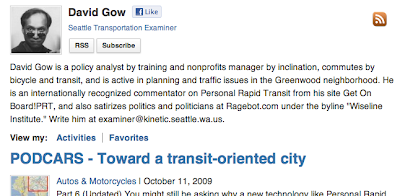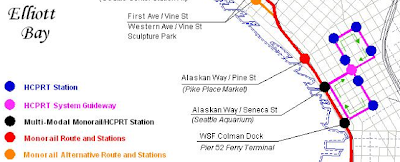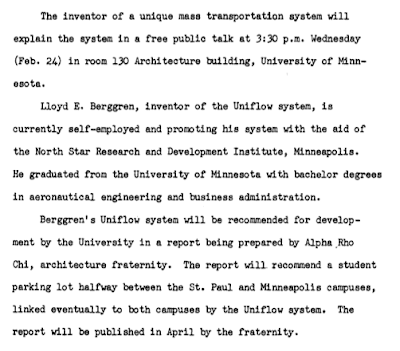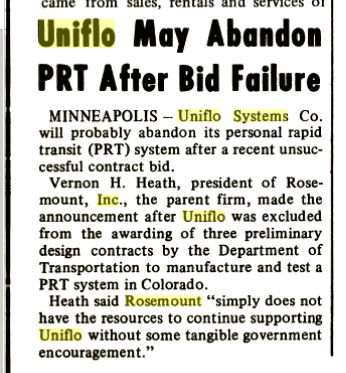Both houses of the Minnesota Legislature are now controlled by the DFL. The MN Senate caucus just announced their choices for committee chairs and Senator Scott Dibble is Chair of the Transportation and Public Safety Division. Here's a quote by Senator Dibble from a 2011 article about PRT:
State Sen. Scott Dibble (DFL-Minneapolis), who heads the senate’s transit subcommittee, said that he thinks the proponents of PRT are sincere, but he dismissed their plans for implementation as that of “technophiles” who are not interested in examining the ramifications of a PRT line in terms of the overall multi-modal scheme, land use, economic development, mobility, urban form and the environment.
“There’s this constant refrain, ‘Build PRT everywhere, all your problems will be solved,’ with no acknowledgement that it is a political impossibility and that we would be throwing a bunch of money at something that’s completely unproven with a lot if implications that haven’t been addressed,” Dibble said. “All I ever here from folks is personal-freedom rhetoric about going anywhere and everywhere, but what happens to the urban forest if you’re running these things all over the place.”In short, PRT is soooo not happening in Minnesota.
Apparently, there are still pod people who hold out hope for PRT in Minnesota - the ULtra PRT website still has a page up about "PRT Niche Options for Minnesota" and there is the proposed $100 million pod project in Coon Rapids.
There's a list of Personal Rapid Transit projects in Minnesota on the Google Transport Innoovators forum:
* Coon Rapids for Rob Jacobs,
* Winona and Duluth for Taxi 2000,
* Bill James talked about an effort in New Jersey and a computer campus N. of Duluth,
* I think that Joe Lampe has an edge city to the N. of downtown Minneapolis
* Ed Anderson is quiet, but says that he has some irons in the fire.
List of PRT businesses is from a CPRT brochure (view on Google):
PRT Updates from Minnesota
JPods
Hull, MA passed a resolution supporting PRT. JPods expects to lease private land and build the first leg there in the next 4 months. New Jersey is considering declaring performance standards, allowing anyone access to public rights of way that can privately finance transport networks that exceed 120 mpg.
PRT International
Dr. Ed Anderson has been working for many years to acquaint planners and decision makers with the potential of an optimized version of PRT for solving urban transportation problems. He gave a presentation to the North Jersey Transportation Planning Authority in December 2010. Dr. Anderson works on advising a number of people in various locations around the world on various PRT projects or pending projects. He is willing to give courses on PRT of any desired depth.
PRT Minnesota
PRT Minnesota’s current focus is on preparing a patent submission for their PRT mechanical design. PRT Minnesota is still
seeking funding to complete the technical development program and achieve manufacturing readiness.
PRT Partners
PRT Partners is based in the Minneapolis area and is headed up by Robert Jacobs. PRT Partners assembles teams, technology, and projects that solve specific urban transportation and land use challenges.
Taxi 2000 and Skyweb Express
Currently, Taxi 2000 is working with two financial institutions interested in implementing Skyweb Express projects using a private public partnership agreement. They are also working with corporations for implementing system on corporate campuses. Taxi 2000 continues to work with Winona, Minnesota to build a PRT demonstration and laboratory facility.
Not mentioned is Rob Jacobs' other company Smart Infrastructure which is pitching the pod project for Coon Rapids.
There are two PRT lobbyists - Mark D. Olson for Smart Infrastructure and Edwin Cain for Taxi 2000 Corporation. Taxi 2000 spent nearly $80K since 2004 lobbying in Minnesota.















